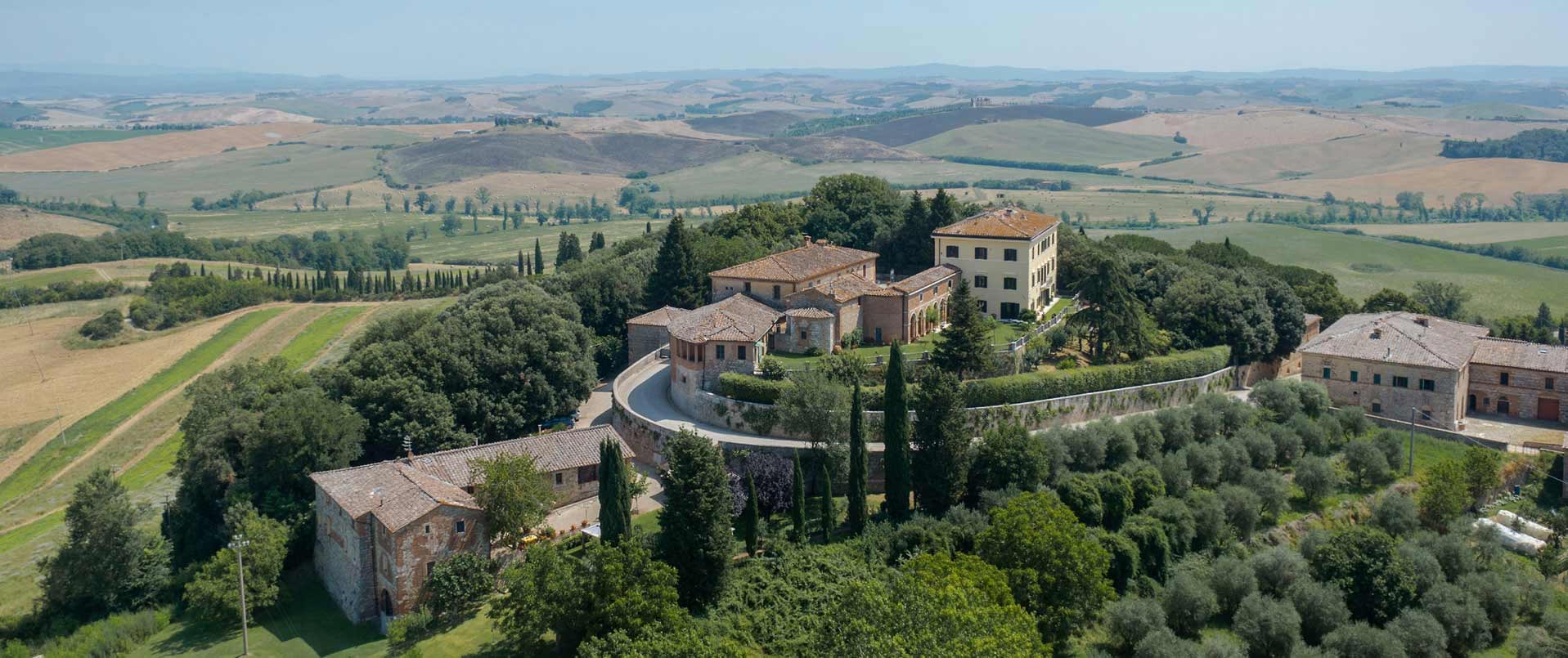
Pope Pius VI, elected to the papal throne in 1775, carried out important hydraulic works in the Agro Pontino, creating a network of canals that still exists and reclaiming part of the plain in the areas of Sezze and Terracina. The expropriated lands were later granted to various families. Among them was the Mazzocchio Estate, which was purchased by Michelangelo Di Stefano on March 3, 1900. These were lands used for livestock in the wild and for growing vegetables and cereals.
The houses, which still form the core of the estate today, were built on the highest areas, those that were not flooded by water during the fall. During the reclamation of the 1930s, the Italian state decided to carry out a general expropriation before proceeding with the hydraulic works.
Fearing that he would lose his property, Michelangelo went to Mussolini, proposing that he leave the land to the current owners if they would carry out the reclamation at their own expense, with an economic benefit to the state.
As a result of this conversation, the Di Stefano family was able to preserve the Mazzocchio Estate, reclaiming it with enormous effort and passing it down from generation to generation.
The Mazzocchio water-scooping machine, the second largest in Europe, located along the Selcella Canal, which borders the estate to the southwest, was used for reclamation.
Throughout its long history, the Mazzocchio Estate has been home to various activities in the livestock and agricultural sectors.
Before land reclamation, corn was mainly cultivated, which was harvested when the water in the fall had covered the land, with farmers walking through the water and depositing the cobs on boats. Another crop of the time was rice, with the harvest engaging the mondine from Vercelli. After reclamation, the land was finally available year-round.
In 1950 the first stables were built, housing cows and buffaloes for milk production. Milking was done by hand; the animals, kept on chains, were led to pasture when not in production. Later mechanical milking was introduced, with the animals kept free to move around a given area.
In the 1990s, management of the farm passed to Michelangelo Di Stefano’s great-grandson, Marco Berardo, the current administrator. The herd consisted of about 500 head of cattle, including cows and buffalo. The land was largely used to grow fodder for the animals.
In 2004, the farm began to engage in social farming. Drawing on experiences in volunteer work, employment projects for the disabled and disadvantaged were proposed and implemented. These people have learned how to cultivate the land, harvest its produce, and perform some tasks related to raising livestock. Among the various initiatives implemented are ready-made bagged salads and the distribution of produce to GAS (Solidarity Purchasing Groups).
In 2007 the Training Center was opened, located in an 18th-century stone farmhouse with a conference room, multimedia room, office, secretariat, meeting and interview room, and three bathrooms. In the fall of the same year, the first training course for disabled and disadvantaged people “Multipurpose worker in agriculture and floriculture – Social Farms” organized at our Farm starts. The Training Center holds ISO 9001:2000 Quality Certification for the Design and delivery of training courses.
In 2008 the social cooperative Fattoria Solidale del Circeo was founded, and in 2010 the company obtained Bioagricert Organic Producer Certification.
In 2011 Marco Berardo Di Stefano became national president of the Social Farms Network, a position he still holds.
In 2012, the decision was reluctantly made to close the stables and discontinue milk and meat production. It was a painful but forced decision, brought about by the stationary cost of milk over the past two decades compared to other commodities and the enormous economic difficulties the farm had to overcome.
Currently the stables are rented and the land is cultivated organically for the production of seasonal vegetables and fruits.
How to arrive
The Circeo Solidarity Farm, nestled in the greenery within the Mazzocchio Estate, is located in the municipality of Pontinia (LT), a few kilometers from the Abbey of Fossanova and the Tyrrhenian coast. The estate covers a total area of 175 hectares. The clay and peat soils are particularly fertile and easily irrigated thanks to the presence of the Ufente River and the Selcella Canal, which border the property.
How to reach us
By car from Rome. Take the SR148 Pontina road. At km 92 at the traffic circle take the third exit SP Migliara 53 for Frosinone. After 8 km turn left for Mazzocchio, just before the bridge over the Ufente River. After 100 m turn right onto Strada Lungo Ufente, which runs alongside the Mazzocchio Estate. After another 600 m is the entrance to the estate.
By car from the Frosinone toll booth. Take SR156 dei Monti Lepini towards Priverno and Terracina. At km 23 exit for Terracina. After 7 km exit for Sonnino and follow the signs for Sonnino Scalo and then for Latina and Terracina for just over a km. Turn left along the Strada Marittima and follow it for 7 km to the bridge over the Ufente River. Immediately after the bridge turn right for Mazzocchio. After 100 m turn right onto Strada Lungo Ufente, which runs alongside the Mazzocchio Estate. After another 600 m is the entrance to the estate.
 Accommodation
Accommodation
 Co-Working
Co-Working
 Film sets
Film sets
 Gardens
Gardens
 Medium and long-term rentals
Medium and long-term rentals
 Parks
Parks
 Pet Friendly
Pet Friendly
 Private events
Private events
 Residences
Residences
 Spirituality
Spirituality
 Visits
Visits
 Weddings
Weddings